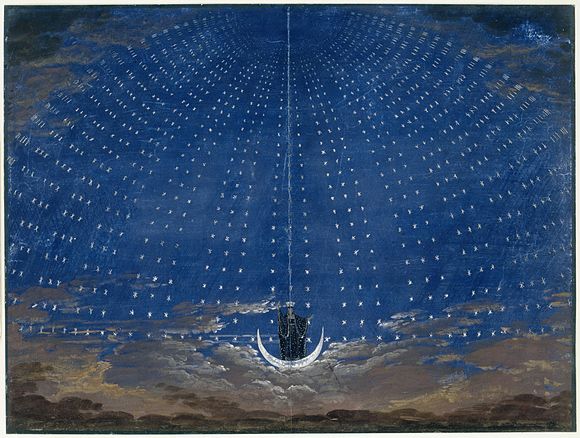Here is a summary of the recent Section for Literary Arts & Humanities meeting of the local group in Fair Oaks, CA. This meeting occurred on February 20, 2021 via Zoom.
“At a Glance . . .”
- A Night at the Opera. Thanks to Marion and Nicholas, Mozart and Ingmar Bergman have joined our meetings. Last night we watched scenes from Ingmar Bergman’s cinematic production of Mozart’s The Magic Flute
- We discussed the relationship of Mozart’s masterpiece to The Fairy Tale by Goethe
- We compared and contrasted the narrative arc of Goethe’s fairy tale to the narrative arc of traditional fairy tales and initiation dramas
- We considered the role of the Queen of the Night in respect to themes we have studied in Novalis, in particular, The Hymns to the Night
- Next week Clifford Venho has agreed to join our meeting from the east coast to share with us his translation of The Hymns to the Night
“Tell me more . . .”
“The Fairy Tale is Mightier than Philosophy?”
Our meeting last night ran a bit longer than usual, as often happens when one attends a performance of grand opera. We watched about thirty-five minutes of scenes from Ingmar Bergman’s cinematic production of The Magic Flute.
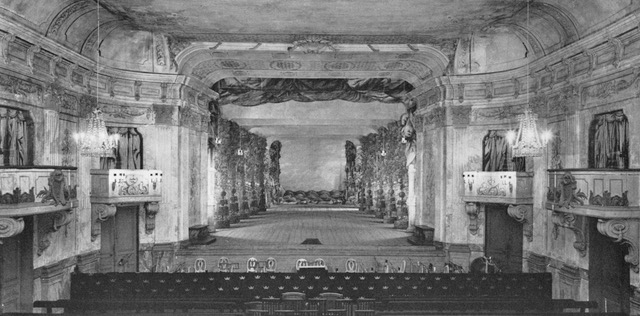
Theater that inspired Bergman’s production of The Magic Flute
“Alles Vergängliche / Ist nur ein Gleichnis”
— Goethe, Faust
The Baroque theater pictured above is quite similar in design to the Weimar theater for which Goethe served as director from 1791, the year that The Magic Flute premiered in Vienna. Goethe held that theater position until 1817. Recent scholarship has begun to unpack the impact that Goethe’s practical work in theater had upon his scientific “experiments.” As Shakespeare recognized, the experiment of theater throws into question implicitly and explicitly the nature of the relationship between constructed subject and constructed object. In theater, “nothing is; everything represents,” says Bergman in the quotation below — words the remind us of the conclusion of the drama Faust.
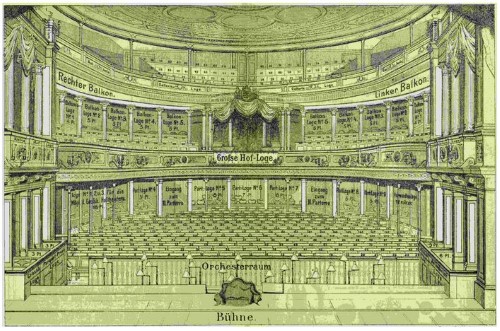
Weimar
“As a boy I loved to roam around. One October day I set out for Drottningholm (in Stockholm) to see its unique court theater from the eighteenth century. For some reason the stage door was unlocked. I walked inside and saw for the first time the carefully restored baroque theater. I remember distinctly what a bewitching experience it was: the effect of chiaroscuro, the silence, the stage. In my imagination I have always seen The Magic Flute living inside that old theater, in that keenly acoustical wooden box, with its slanted stage floor, its backdrops and wings. Here lies the noble, magical illusion of theater. Nothing is; everything represents. The moment the curtain is raised, an agreement between stage and audience manifests itself. And now, together, we’ll create!”
— Ingmar Bergman
Bergman used Mozart’s overture to show successive portraits of audience members. He begins with the picture of a child. We have seen in many of our previous meetings how Novalis believed that the fairy tale is mightier than philosophy. In Bergman’s camera view of faces ranged wide and far on the spectrum of belief / disbelief, we witness the alchemical process of the blossoming of Imagination, as the audience members — each in her or his own way — prepare the soul to accept or to reject the “fairy tale” or “initiation drama” about to unfold. When Prince Tamino races upon stage, crying for help — pursued by a laughably artificial monster — do we twitter with cynicism or crack wise or enter into a magical idealist moment of optimistic youth? Hopefully the overture has woven its spell — so that when the three ladies appear with Michaelic mood and gesture to slay the “evil” dragon and save the prince, our own hopeful embodiment into the drama will have allowed us to cross a threshold and begin . . . well, what? An initiation? Drama and karma are similar concepts. As the good old cliché has it: “character is destiny.”
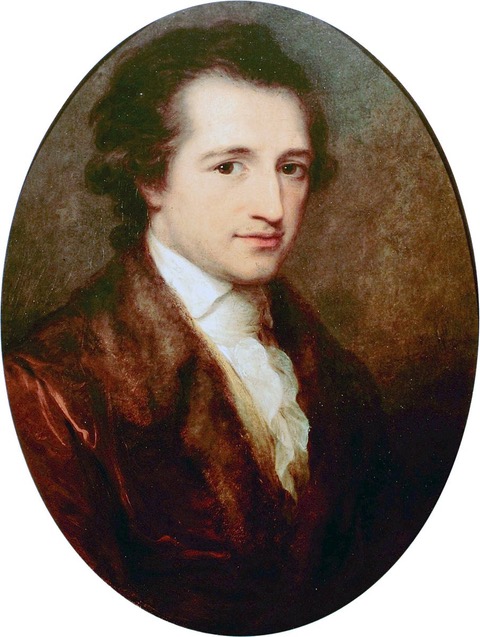
“The Young Goethe” by Angelica Kaufmann, 1787
“Der Hölle Rache kocht in meinem Herzen!”
I’ve heard it said that the Queen of Night’s famous aria is the greatest curse in drama — equal in power to Lear’s famous rant upon the heath, perhaps — if not more powerful. The exclusion of the feminine and darkness from the Being Human by the good old patriarchal solar hierarchy is a theme that Novalis explored repeatedly. At our meeting last night, we focussed on the two aria’s of the Queen — the first in which she recruits Prince Tamino, the second in which she threatens to dissolve all bonds of nature, destroy her daughter, and loose upon the world that most dreaded Fear of the Enlightenment-eighteenth-century: Chaos! — although Chaos had already trod upon the stage in the imaginations of many of Goethe’s contemporaries with the arrival of the French Revolution. Recall the lyrics to the famous tune played by Cornwallis at the defeat of the British at Yorktown (another advent of Revolution and “chaos,” much admired by French patriots): “The World Turned Upside Down.” Novalis’ idea of “sensitive Chaos” notwithstanding.
She comes! she comes! the sable throne behold
Of Night primeval, and of Chaos old!
Before her Fancy’s gilded clouds decay,
And all its varying rainbows die away.
Wit shoots in vain its momentary fires,
The meteor drops, and in a flash expires . . .
Lo! thy dread empire, Chaos! is restored;
Light dies before thy uncreating word:
Thy hand, great Anarch! lets the curtain fall;
And universal darkness buries all.
— Alexander Pope, The Triumph of Dulness from The Dunciad
Hope, Revolution, Renewal!
We discussed how The Fairy Tale by Goethe is untraditional in structure, in that it has no salient villain or hero / heroine. In The Magic Flute, for example, Tamino — but even more so, Pamina — are hero / heroine whose successful rites of passage (initiations) make possible a renewal of self and society. One might argue that in Goethe’s fairy tale, in contrast to Schikaneder’s fairy tale, the hero / heroine is the community; — or is it perhaps the Temple that rises so resplendently at the climax of the tale? One might even characterize the arc of drama in some romantic narratives as a movement from Prometheus to Community. For example, the arch-magus of Promethean art, Beethoven, concludes his Ninth Symphony with a chorus. One is reminded again of the beginning of Bergman’s film, with its repeated “voicing” of faces. Schiller’s Aesthetic Letters orbit about the question (spawned by Revolution): how is the proper community of the Being Human to be found? Likewise Goethe’s fairy tale, one might argue, poses the same question as Schiller. Many Philosophies, Social Theories, and Societies may founder and have foundered upon the rock of this vexing question of the community. What role can a mere whimsical fairy tale hope to play in this social drama?
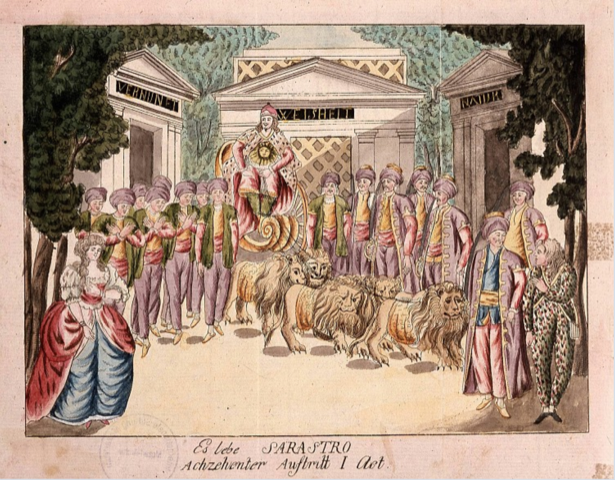
“The World Must Be Romanticized”
Next week translator and eurythmist Clifford Venho has agreed to join us to discuss his translation of The Hymns to the Night. Here’s is a link to Cliff’s website.
For those who wish to have a night at the opera in Sweden, here is a link to the Bergman version of Mozart’s The Magic Flute.
We will continue our journey with Goethe’s The Fairy Tale in future meetings this spring. We will not have meetings at the time of Easter. There will be no meeting on March 27 and on April 3.
On March 20, Terry Hipolito has agreed to join us to give a presentation. On May 1, Brian Gray has agreed to join us to give a presentation. May 2 is the birthday of Novalis. Although we typically do not meet on a Sunday, perhaps we can organize some kind of celebratory salon? Let’s see what happens in and with the time being.
Scene change. Temple of the Sun.
Sarastro, Tamino and Pamina in priestly apparel, the priests and the three boys appear.SARASTRO
The sun’s rays drive out the night,
destroy the ill-gotten power of the dissemblers!CHORUS
Hail to you on your consecration!
You have penetrated the night,
thanks be given to you,
Osiris, thanks to you, Isis!
Strength has triumphed, rewarding
beauty and wisdom with an everlasting crown!
— Mozart / Schikaneder / Conclusion of The Magic Flute“To romanticize the world is to make us aware of the magic, mystery and wonder of the world; it is to educate the senses to see the ordinary as extraordinary, the familiar as strange, the mundane as sacred, the finite as infinite.”
— Novalis

